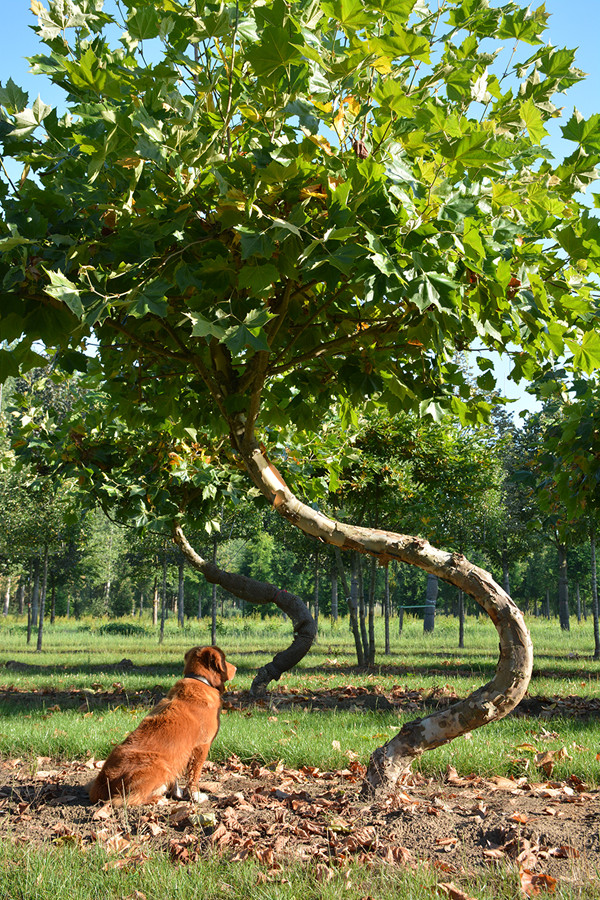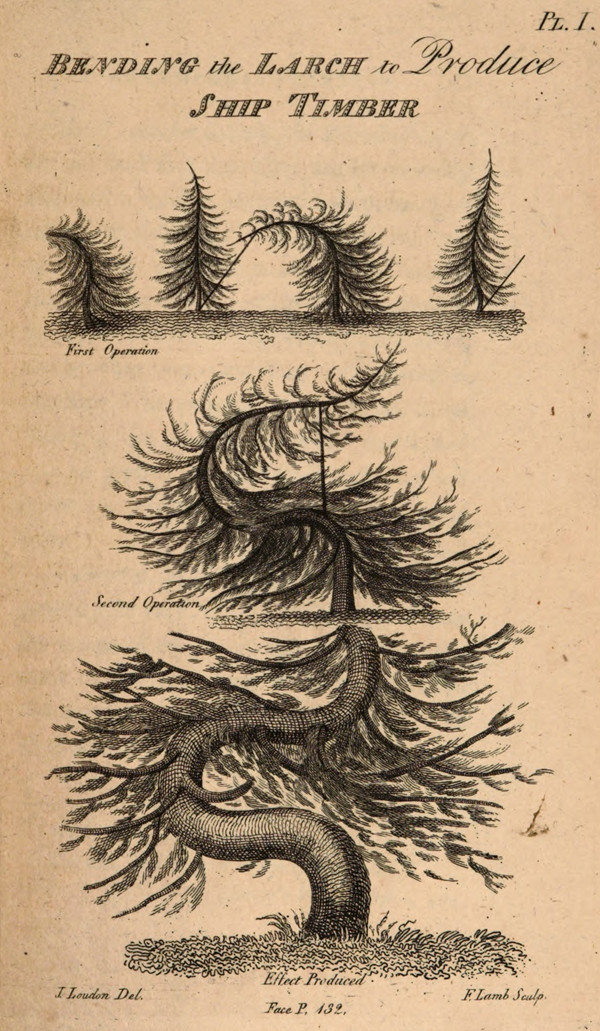
SWING-boom (Foto: Van den Berk Boomkwekerijen)
Op internet kwam een bericht voorbij over de ‘swing-boom’. Zie hier, ook om de foto waar copyright op rust. Deze ‘swing-boom’ is volgens de beschrijving ontstaan uit de behoefte aan een groen dak, zonder de belemmering van een stam midden in het terras. Er werd geëxperimenteerd met varianten op de bekende dakboom en gezocht naar een vorm die zowel praktisch als sierlijk is. Zo ontstond uiteindelijk het idee voor een S-vormige stam. Door die S-vorm is de dakboom naast het terras te planten zodat deze niet in verharding hoeft groeien.
De foto’s deden me denken aan een bepaald historisch plaatje. Tja… vind zoiets maar eens terug. Maarre gevonden hoor. In Observations on the formation and management of useful and ornamental plantations van Loudon uit 1804.

Bending the larch to produce ship timber (Loudon, Observations on the formation and management of useful and ornamental plantations, 1804).
Loudon schrijft: Shipbuilders use some kinds of wood in particular, as the oak. The larch might also be trained for this purpose, by bending down the stem when twenty feet high, and fixing it in a certain position.
En in een noot: … the bowing and bending of young timber trees, especially oak and ash, into various flexures, curves and postures, which may be done by humbling and bending them down with tough bands and withs, or hoops, either cut screw-wise, or slightly haggled and indented with a knife, and so screwed into the ground, or by hanging of weighty stones to the tops or branches, till the tenor of the sap, and the custom of being so constrained, do render them apt to grow of themselves, without power of redressing. This course would wondersully – accommodate materials for knee-timber and shipping, the wheelwright and other uses; conform it to their mould, save infinite labour, and abbreviate the work of hewing and waste.
Jan Holwerda
